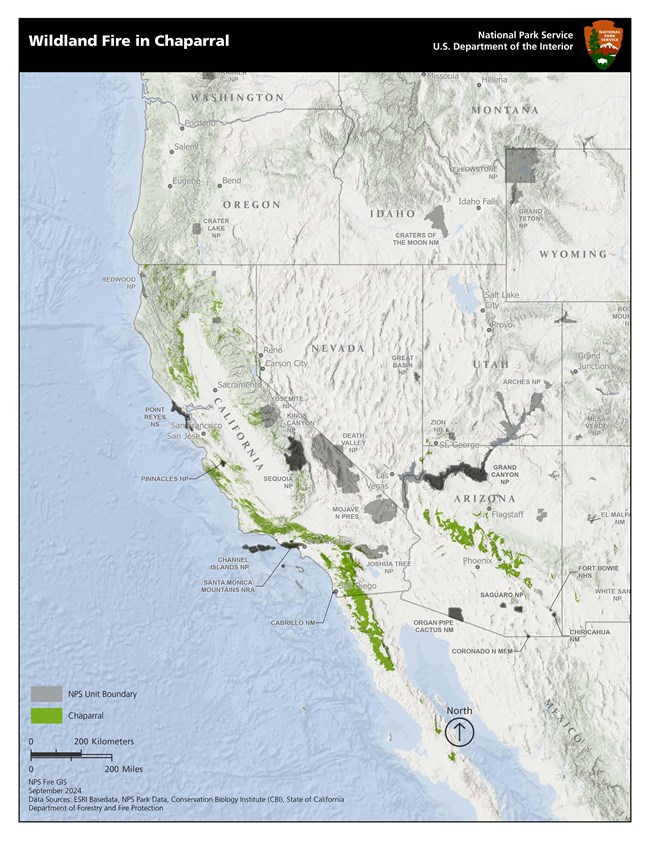Last updated: March 4, 2025
Article
Wildland Fire in Chaparral: California and Southwestern United States

NPS
Chaparral is a general term that applies to various types of brushland found in southern California and the southwestern United States. Plants such as manzanita, ceanothus, chamise and scrub oak, along with other grasses and forbs, are examples of typical chaparral flora. This community contains the most flammable type of vegetation found in the United States. It is no surprise, then, that many of these species are well-adapted to fire and some actually possess traits that encourage fire.
One chaparral plant, ceanothus, has leaves that are coated with flammable resins. Ceanothus seeds require intense heat for germination, and its roots are specially adapted to enable the plant to grow in areas that were recently burned. Other chaparral shrubs also contain flammable oils and resins in their leaves. The leaves and branches of these plants are small, adding to their flammability.

NPS
Chaparral plants sprout quickly, and grow and spread rapidly. This rapid growth, along with the plants' ability to produce heat-resistant seeds that remain dormant yet viable in ground litter for long periods of time, contributes to the ability of chaparral flora to recover quickly following fire. Furthermore, many nutrients are locked in the foliage of chaparral plants. Through burning, these nutrients are recycled back into the soil.
With age, chaparral plants become less productive but are not easily overtaken by invading species. Long-intervals between fires in this type of community serve to replace older plants with younger, more productive ones of the same species. In areas with unnaturally frequent fires, rather than replacement of native species, exotic species are able to overtake and change the fire regime, as in the case in tallgrass prairies.
Tags
- cabrillo national monument
- channel islands national park
- chiricahua national monument
- coronado national memorial
- fort bowie national historic site
- golden gate national recreation area
- grand canyon national park
- organ pipe cactus national monument
- pinnacles national park
- point reyes national seashore
- saguaro national park
- santa monica mountains national recreation area
- sequoia & kings canyon national parks
- chaparral
- wildland fire
- california
- learning in depth
- fire facts
- fire in ecosystems
- arizona
- fire ecology
